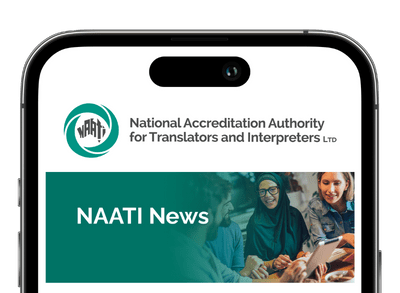It is my great pleasure to have the opportunity to talk about my interpreting and translating career. I was born into a bilingual family in Yugoslavia – Hungarian and Serbian/Croatian. My family lived on the territory of Serbia and had relatives both in Serbia and in Hungary. As it happens in bilingual families, the two (or more) languages were spoken equally and daily in our house and formal education, radio and TV programs, newspapers and magazines were available in both languages. I migrated to Australia in 1992 and became an accredited translator in 1994, although I had worked as a translator and interpreter for a number of years before I migrated.
From an early age, I wanted to be an interpreter and translator and all my studies were directed towards that goal. When I just started to talk, relatives from the Hungarian side of the border visited and wanted to communicate with my mother who did not speak much Hungarian. They asked me to interpret between them and explained that I just had to say what they had said in Hungarian to my mother in Serbian. After I had understood that it was that easy, I started and never stopped. Apart from being fascinated with how different languages work and wanting to express different things, I found that the often overlooked interpreter and the invisible translator have a role which is extraordinarily powerful because we are a bridge which connects two worlds which would not have meaningful contact without us.

This work can never get boring. Even with standard documents, there are always some surprises and challenges. There is a very wide range of types of texts that need to be translated that I am always learning something new: from geography, history, names and their origins to health, taxation, and legal issues. There is so much to learn from all these materials that it is like reading a good book. Even sitting at home alone, translation is very much a two-way process – I feel that I am not the only one giving.
The industry has changed a lot over my career. I used to work on a typewriter, with translations delivered to clients manually, and relied on hard copy dictionaries. I have collected about 150 dictionaries! The fax machine made our lives a bit easier, and after that the computer came along. At first the computers and fonts did not work so well, and before the internet and email, the computer was just another version of the typewriter (with the advantage of being able to delete text without making a hole in the document and having to start all over again).
The internet and the email made the most significant difference and with them, computers started to make more sense to me. At the beginning, the internet was slow and frustrating, but it improved considerably within a relatively short time and became more accepted. Now we can work from anywhere and have clients from all over the world. This is a great advantage. Another advantage is that we can access not only dictionaries, but an endless number of articles on anything we work on and within seconds or minutes find the right term for almost anything. And we learn so many other things along the way. In the last few years, demand for translation work has gone up to a level which has never been seen before.
To those who may be considering a career in this profession, I would, first of all, say that we need young people to join the profession and that they will be well-supported and mentored by their senior colleagues, training organisations and employers. I would strongly advise them to use every opportunity to study and improve their knowledge of the languages, keep up to date with ever‑emerging new technologies, be flexible and have patience with building their careers, know how to apply the principles of the Code of Ethics, and know that interpreters and translators are students for life. Choosing this career means that we are enrolling in a life‑long course that will never finish.
To finish, I would like to share a recipe with you. A lot of people may be familiar with ‘burek’, ‘chevapi’, ‘veshalica’, ‘muchkalica’, ‘musaka’, ‘sarma’ (sour cabbage rolls), ‘baklava’, ‘djuvech’ – dishes which we share with the Turks, Greeks and Middle-Eastern people. I decided to share a simpler dish that everyone will like: Leskovachka muchkalica (Лесковачка мућкалица-Leskovačka mućkalica):
- Chop up leftover meat from your last barbeque
- Depending on the quantity of meat, chop and fry brown onion/s until soft
- Add chopped roasted capsicum in the pot with the onion, plus the chopped up barbequed meat and a can or two of chopped tomatoes.
- Add salt (or Vegeta – a mixture of dry spices used for everything, available in every supermarket, but it contains salt, so be careful), smoked paprika flakes, sweet and hot paprika powder – this dish needs to be spicy!
- Boil it until all ingredients come together and the juice thickens/reduces and eat it with thick slabs of fresh (white) bread.
Пријатно! Dobar tek! Jó étvágyat! Bon appétit! Or as the Aussies say: Two, four, six, eight, bog in, don’t wait!
Elizabeth Comor is a Certified Translator in Serbian (both directions), Croatian (both directions) and English into Hungarian.
